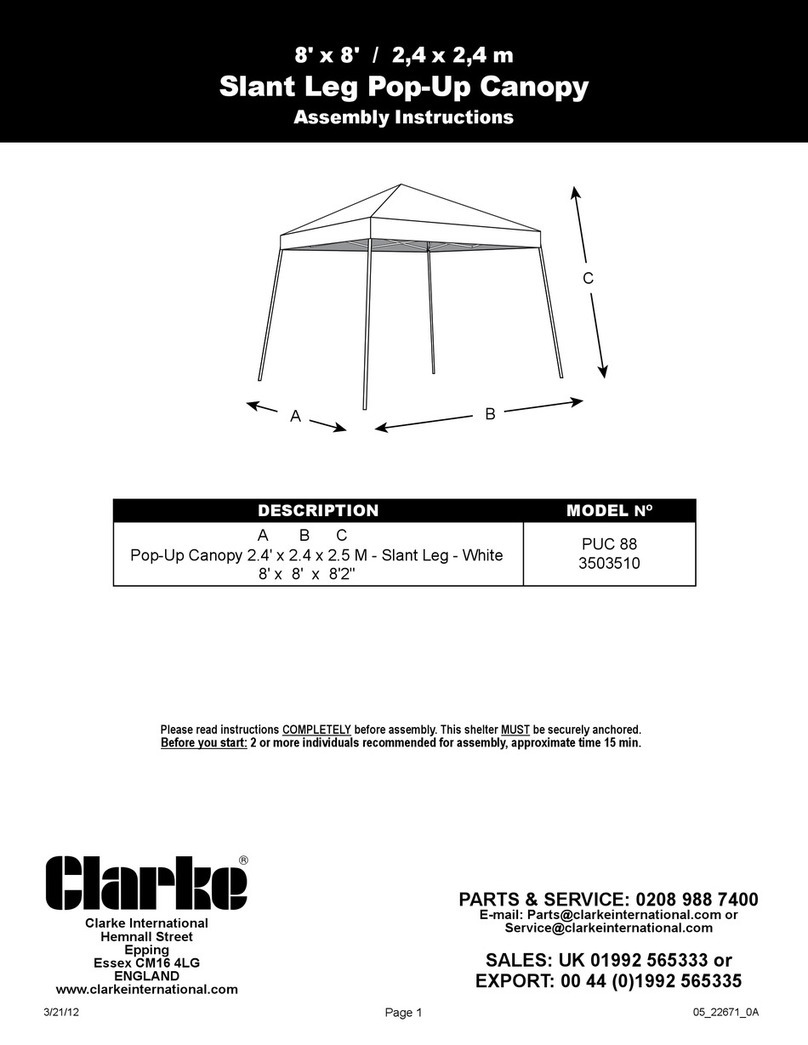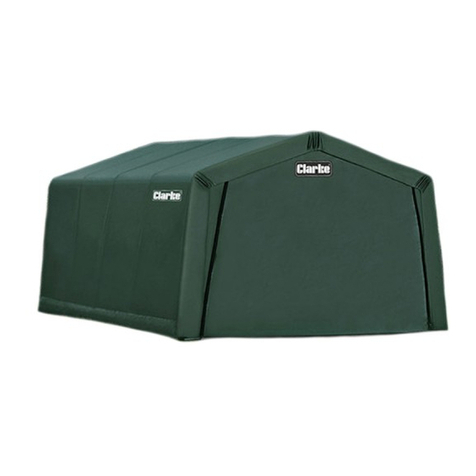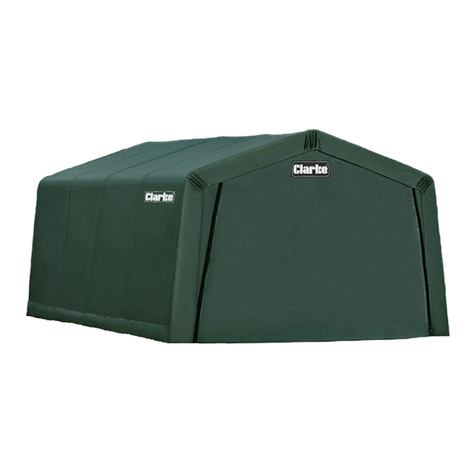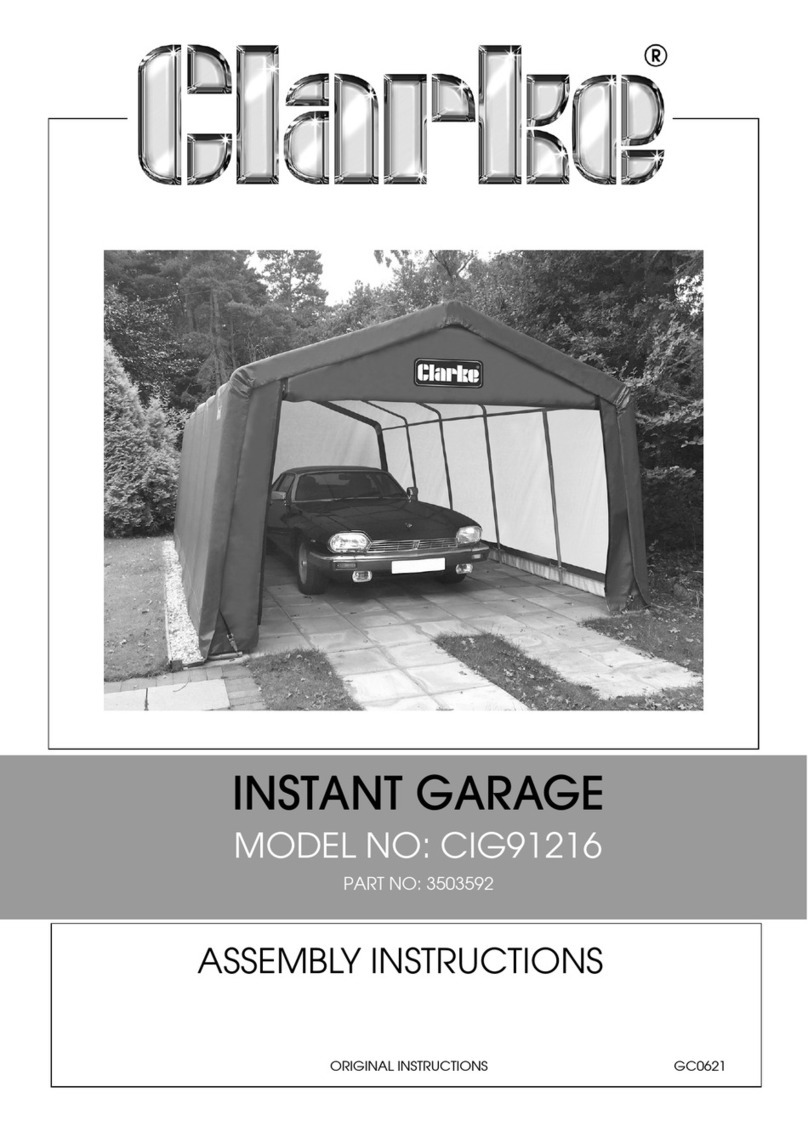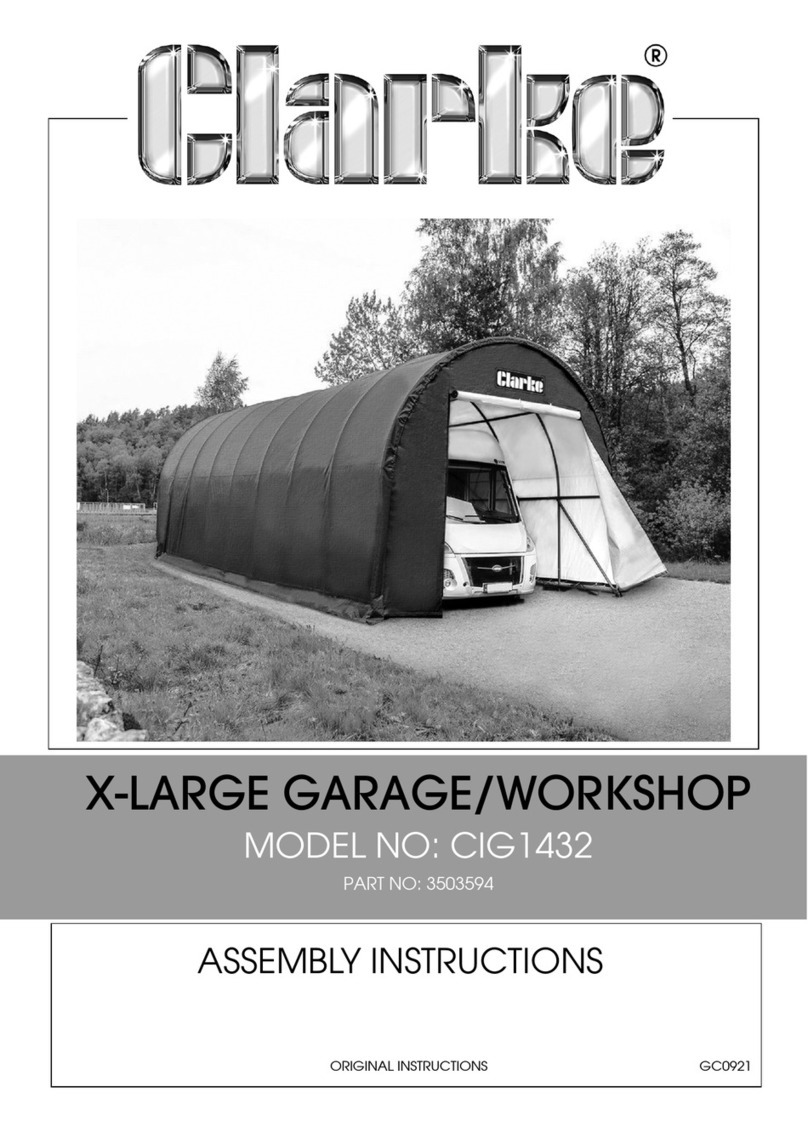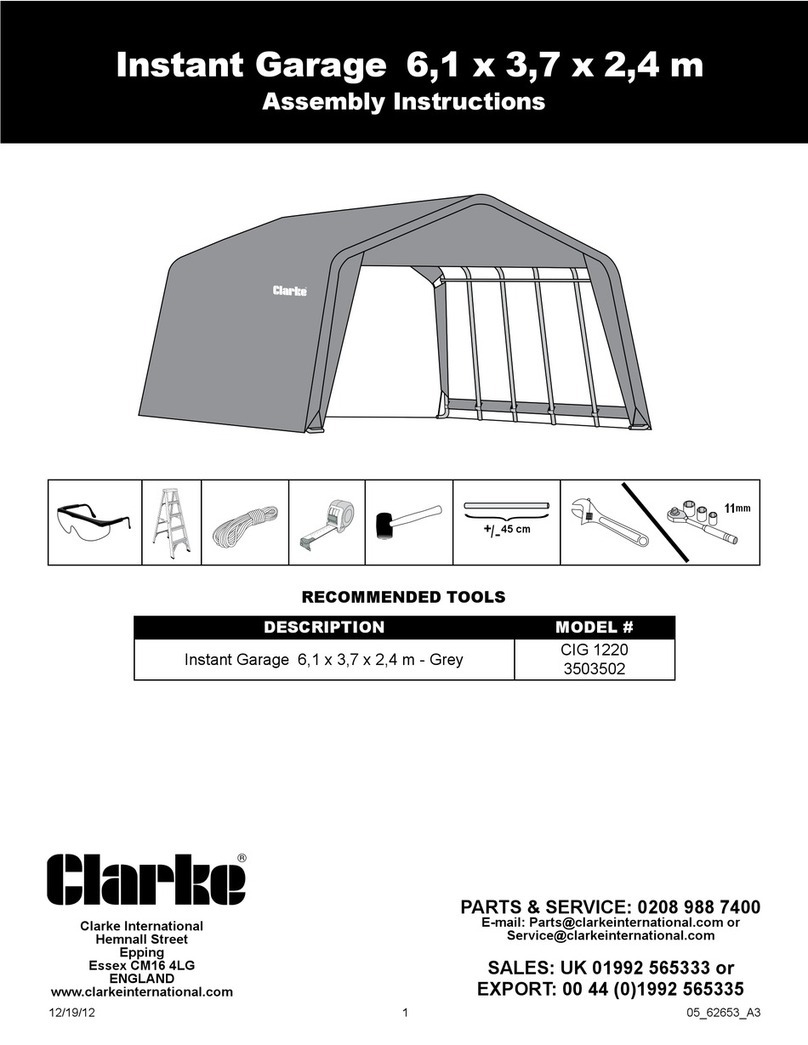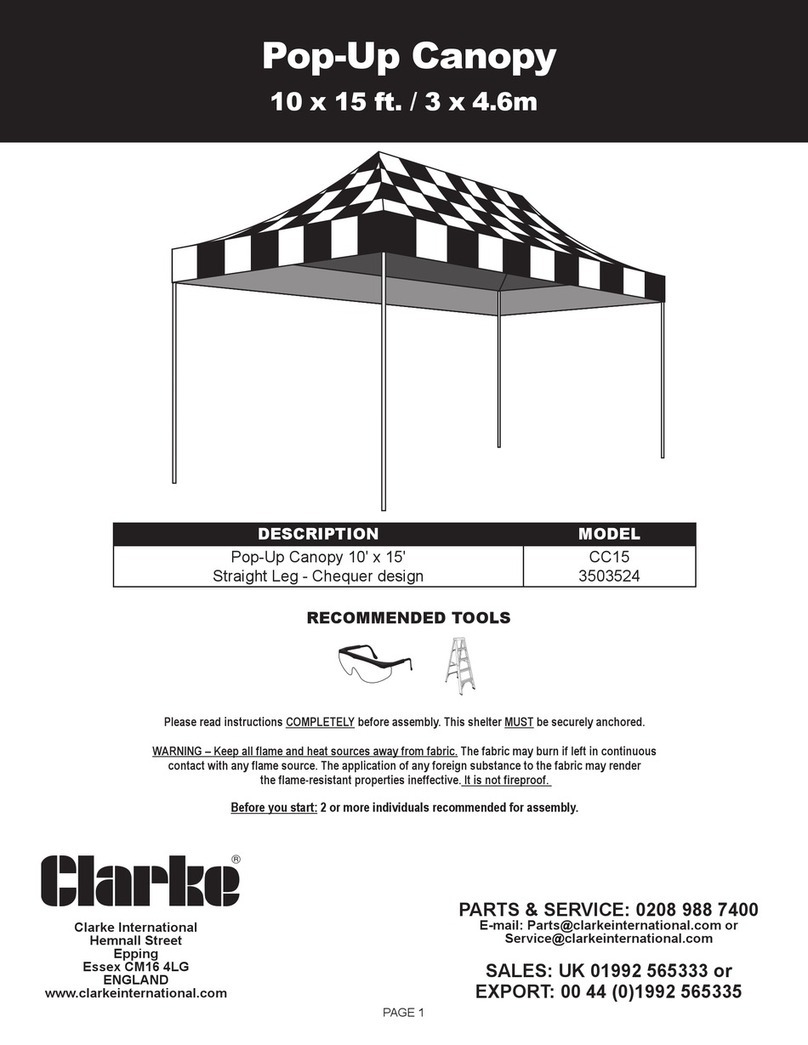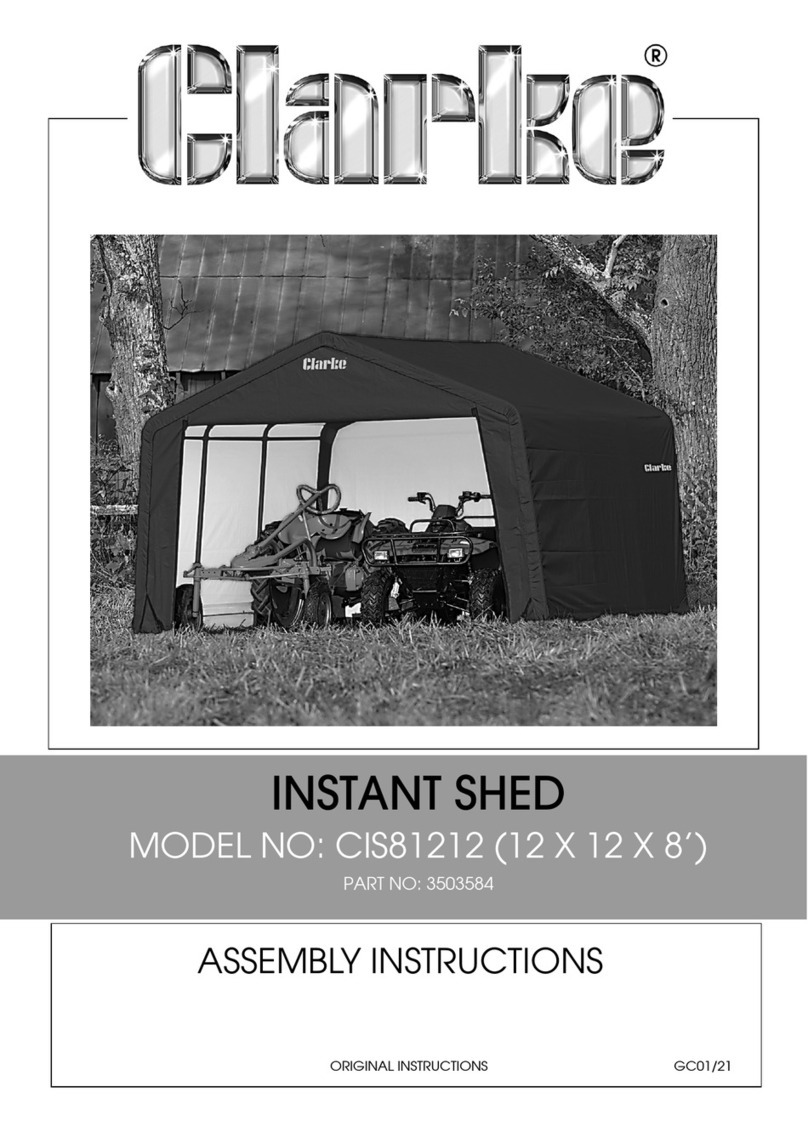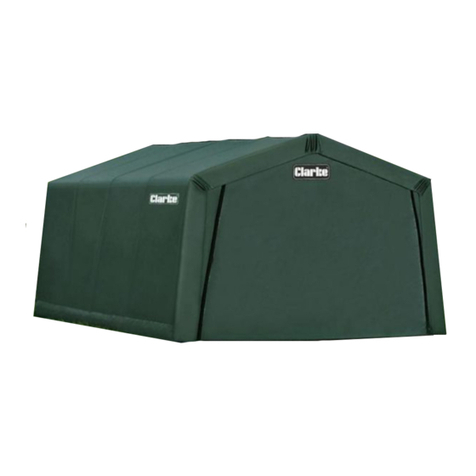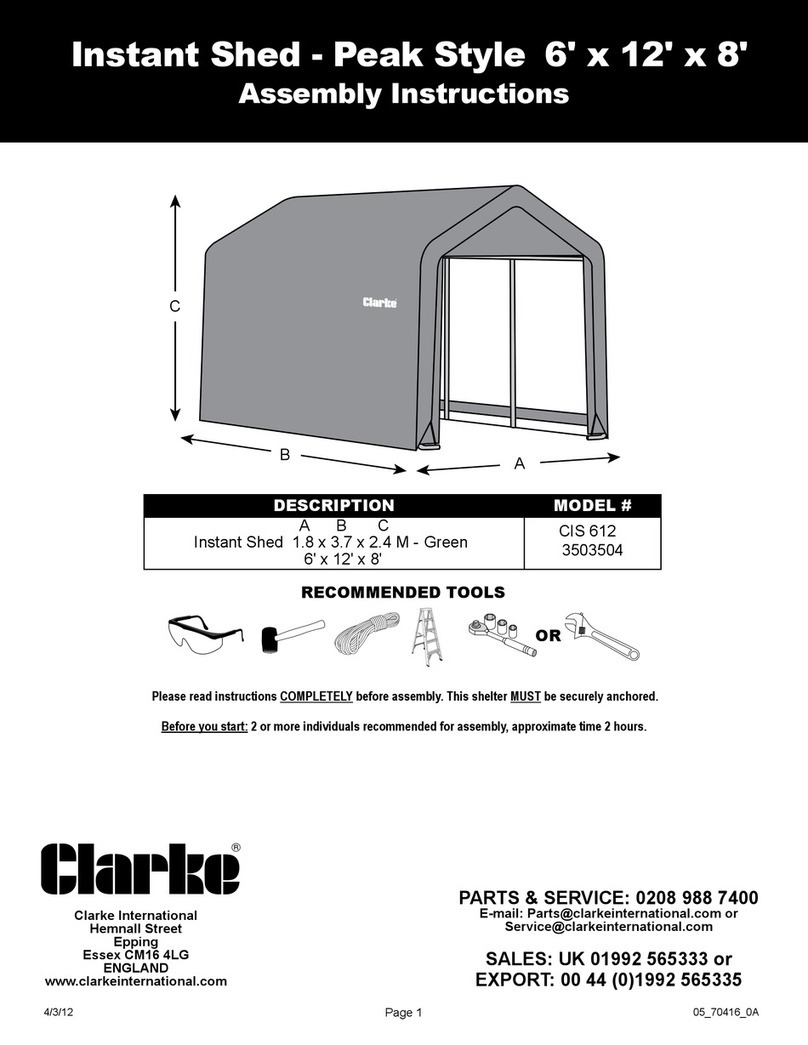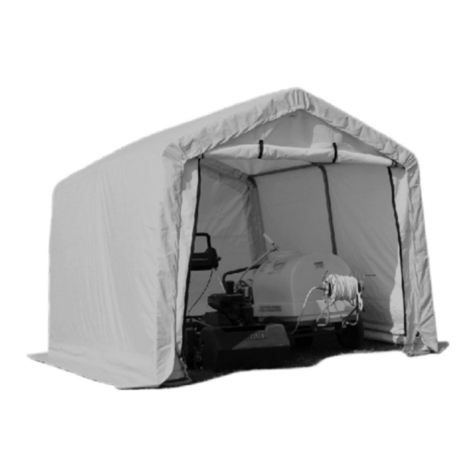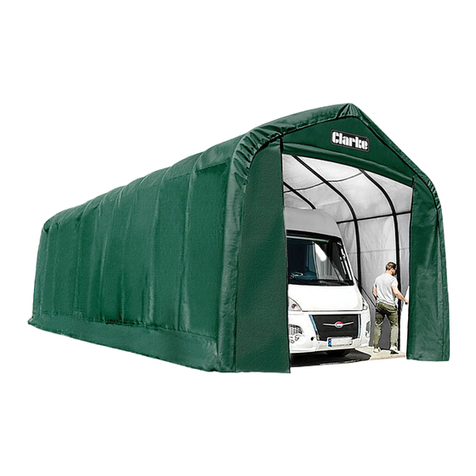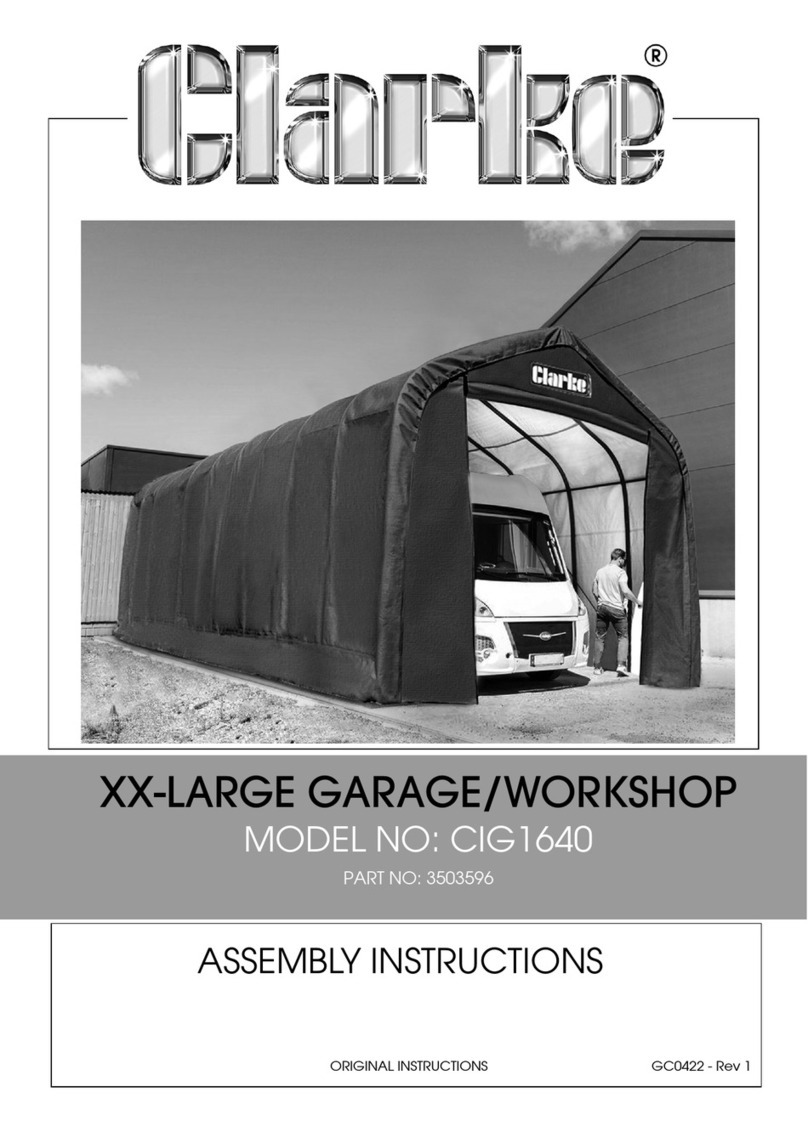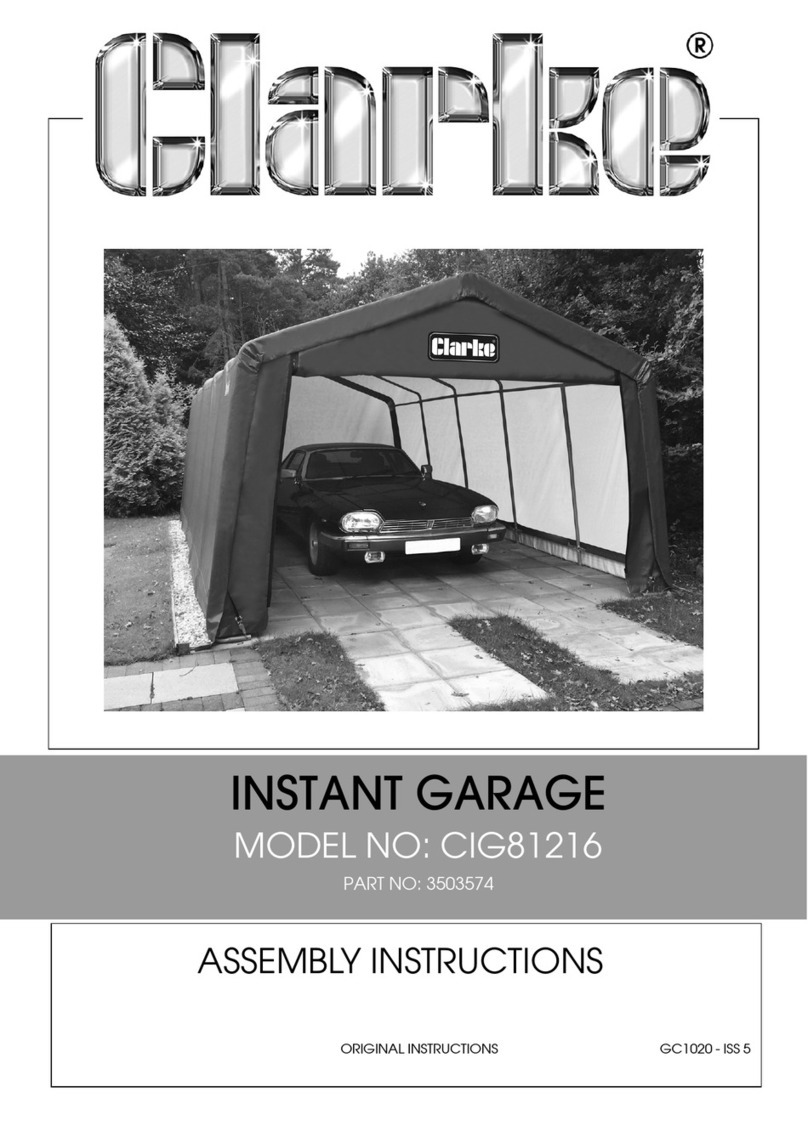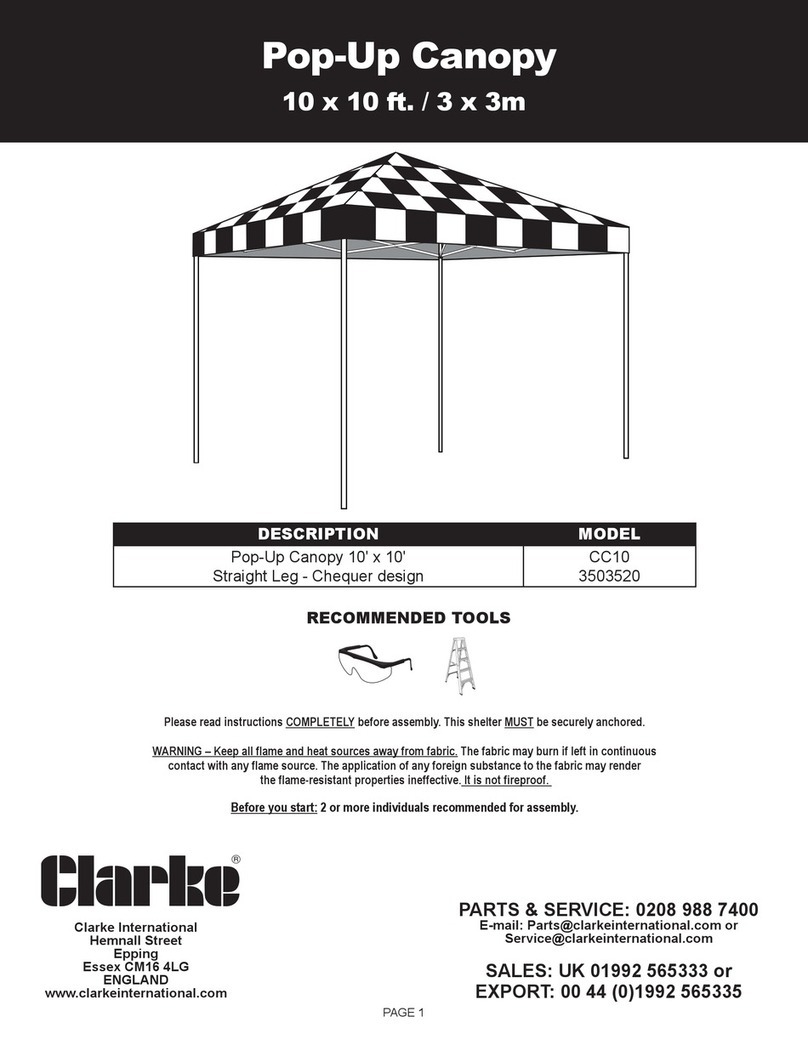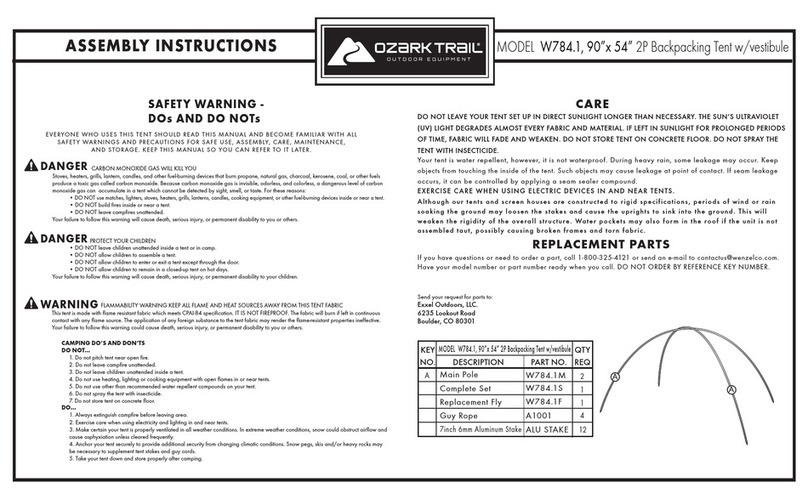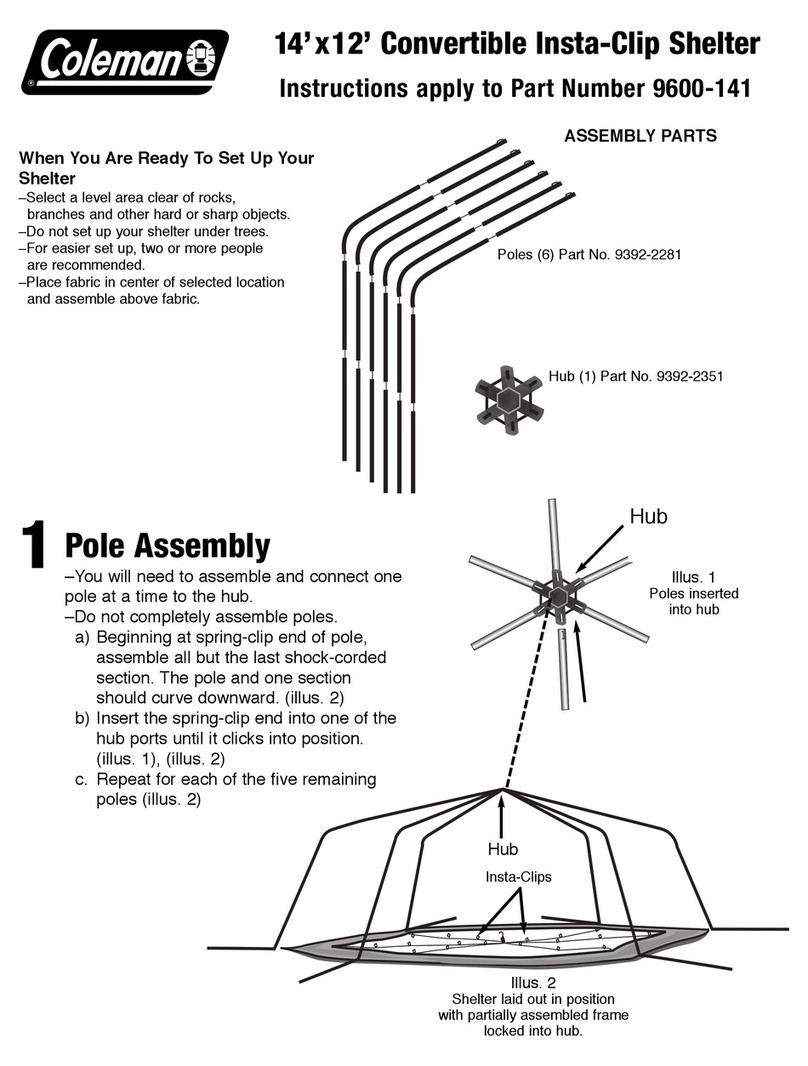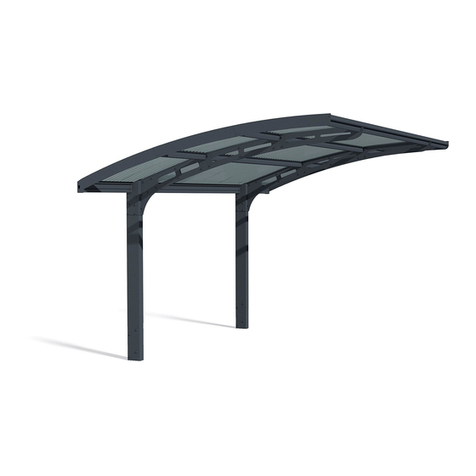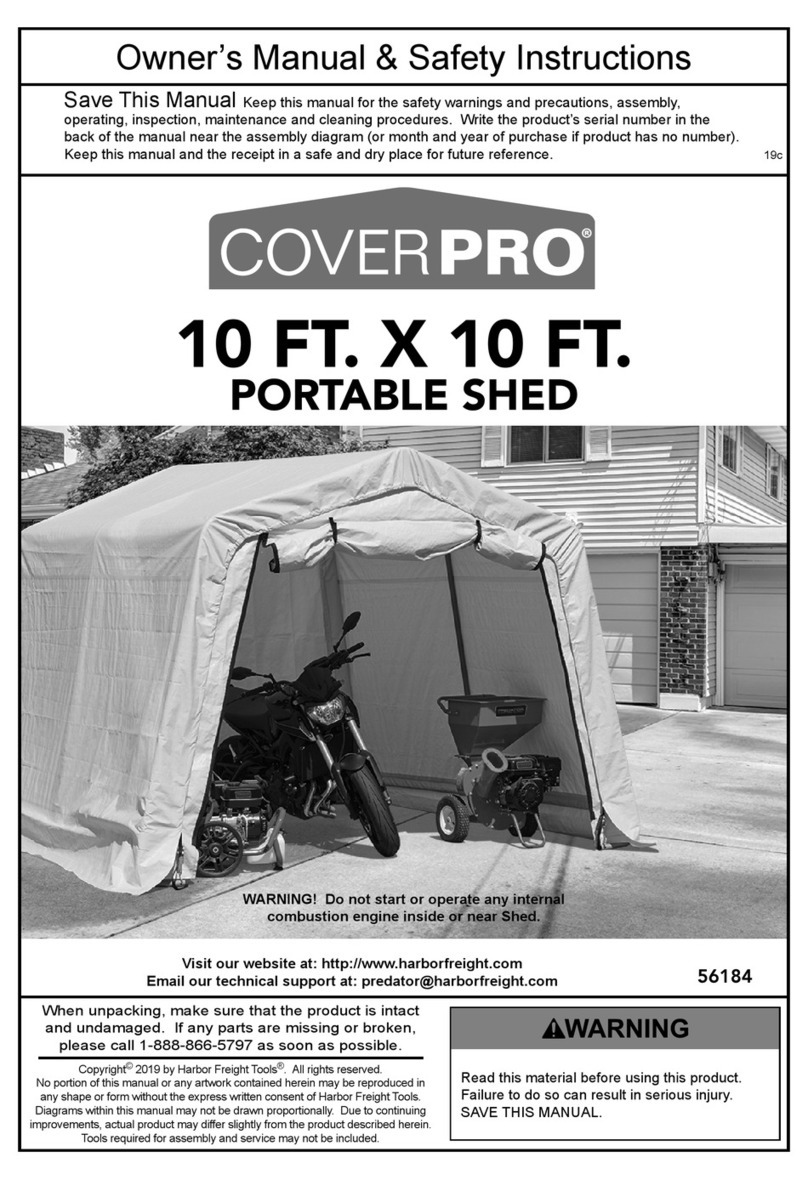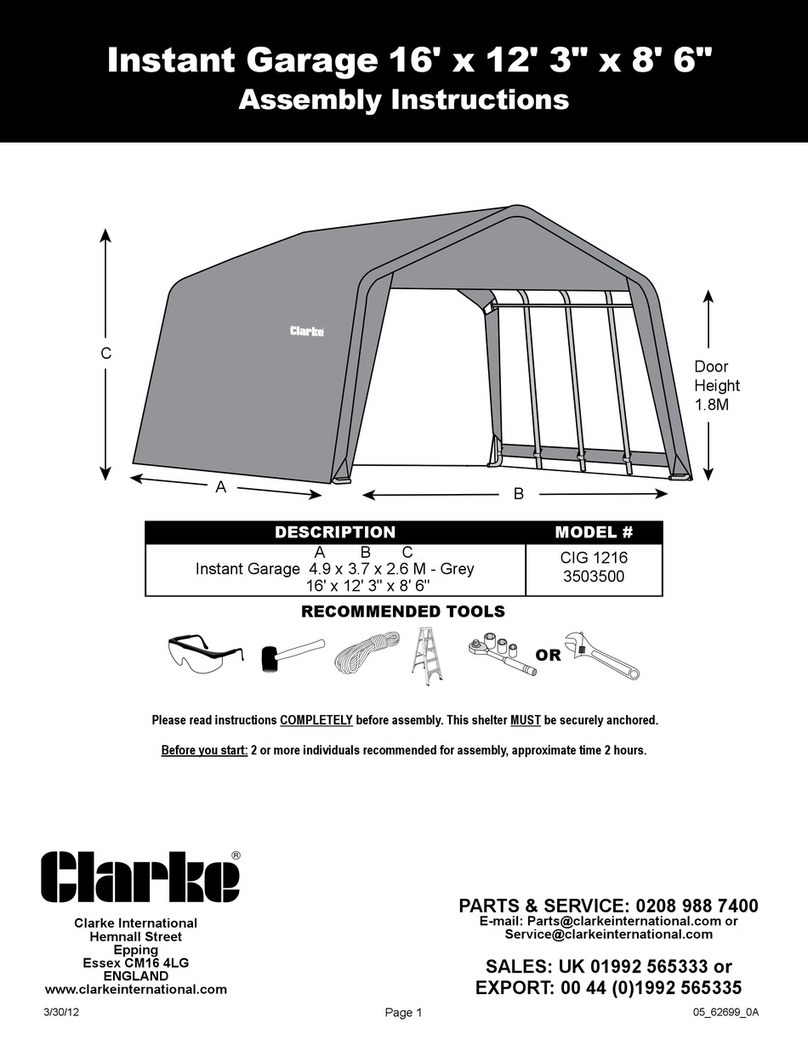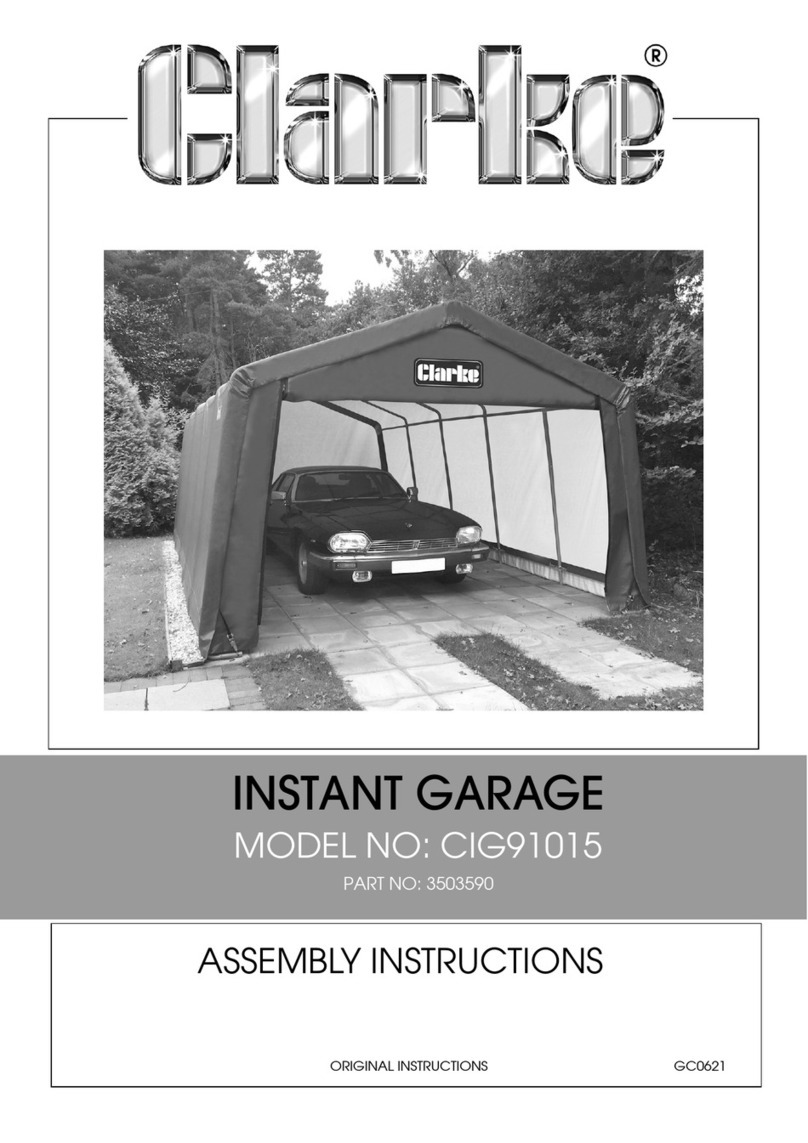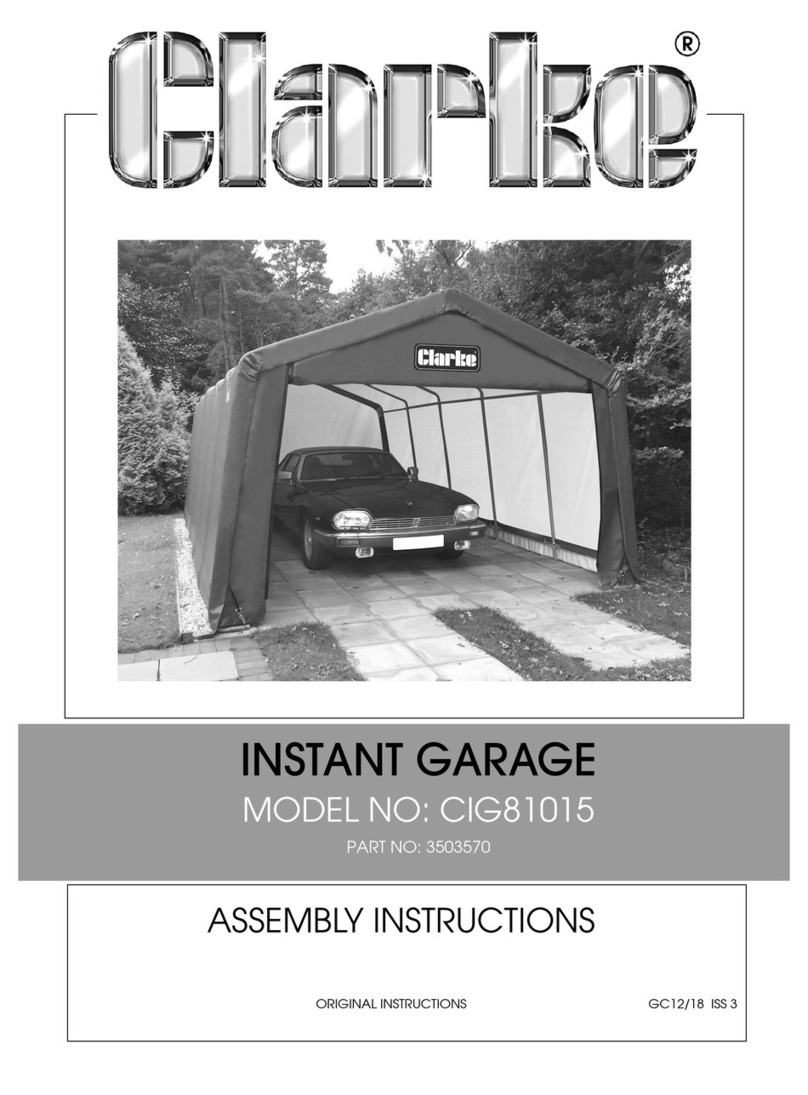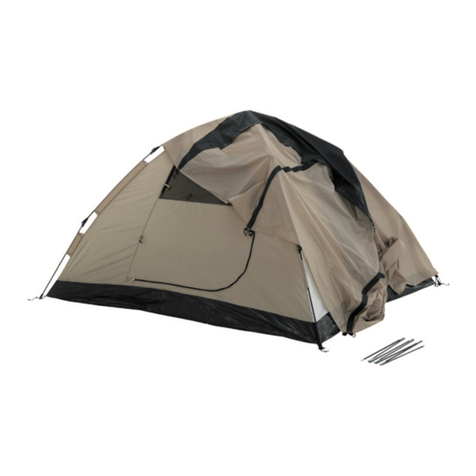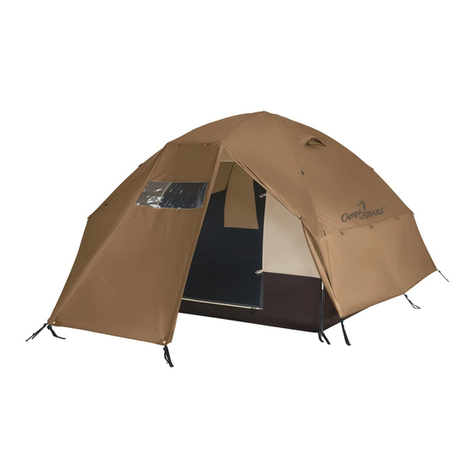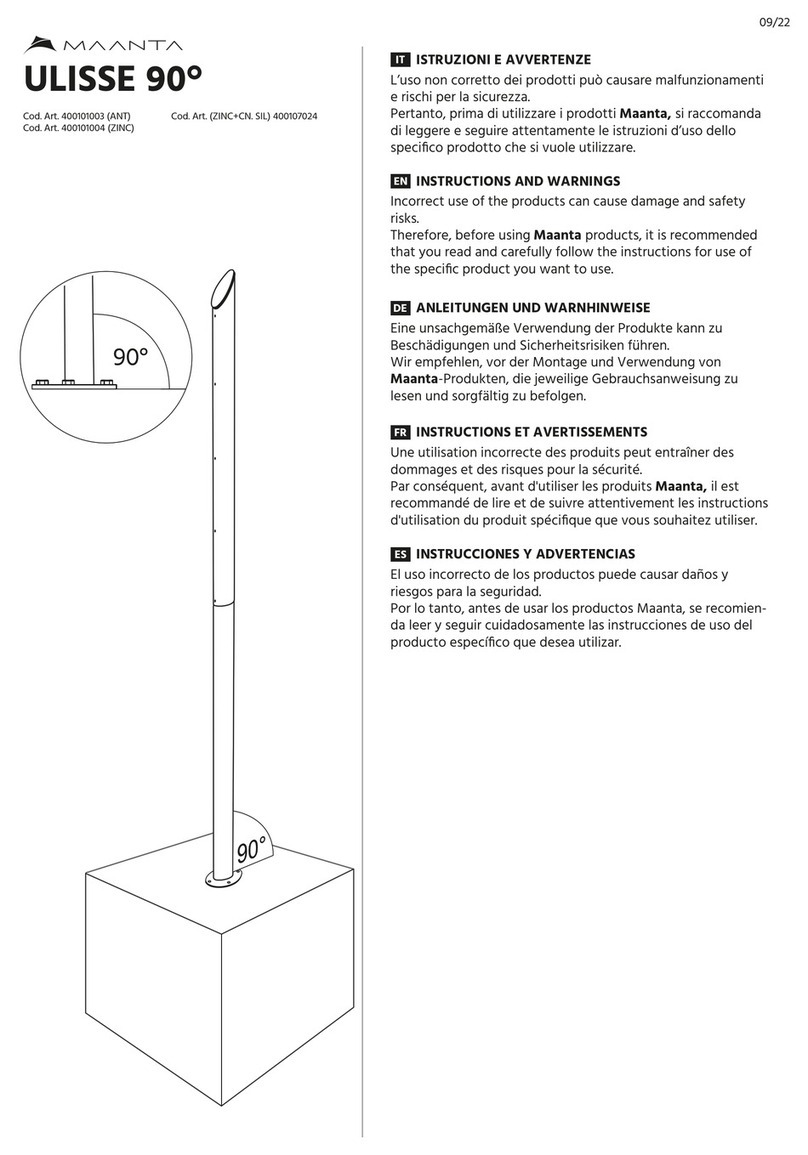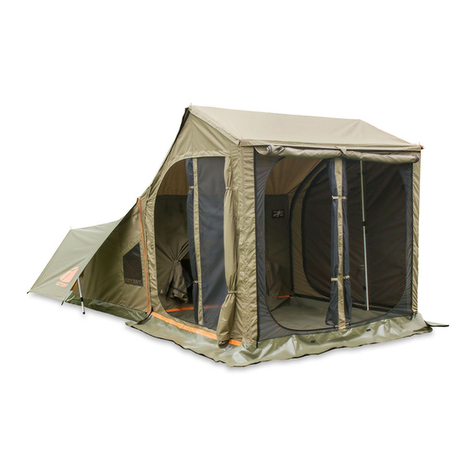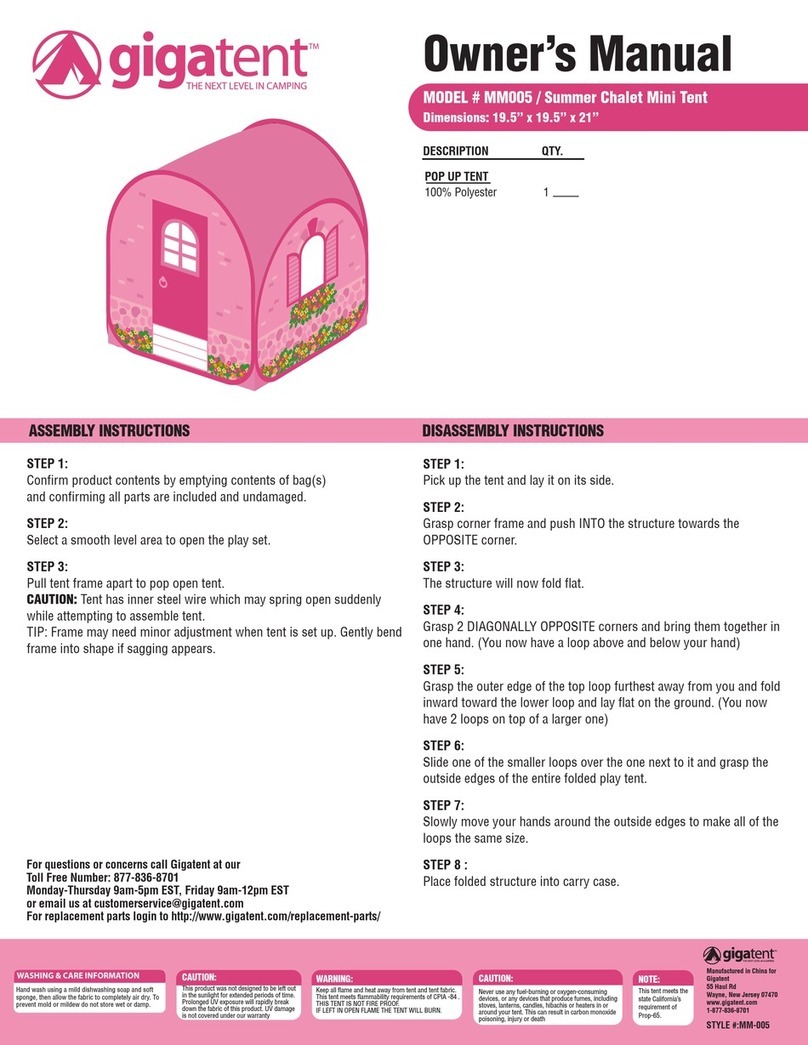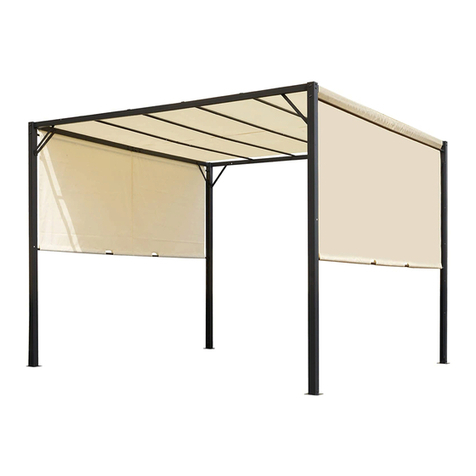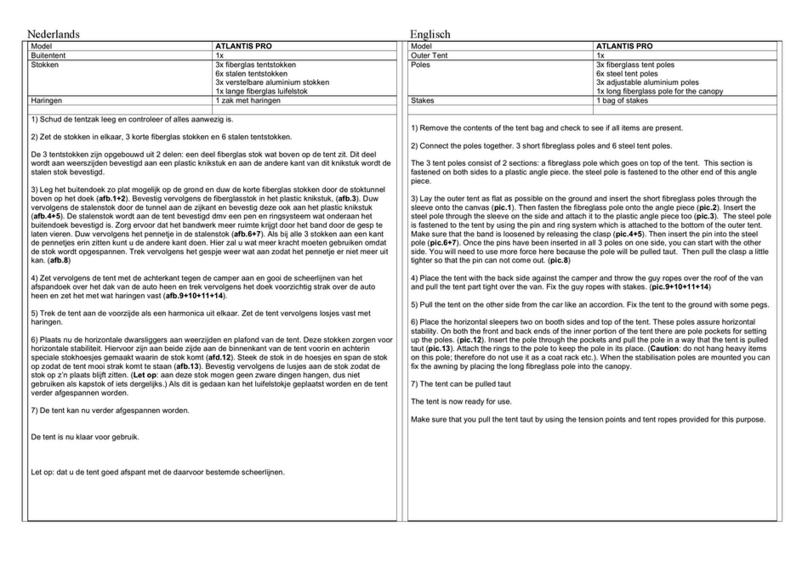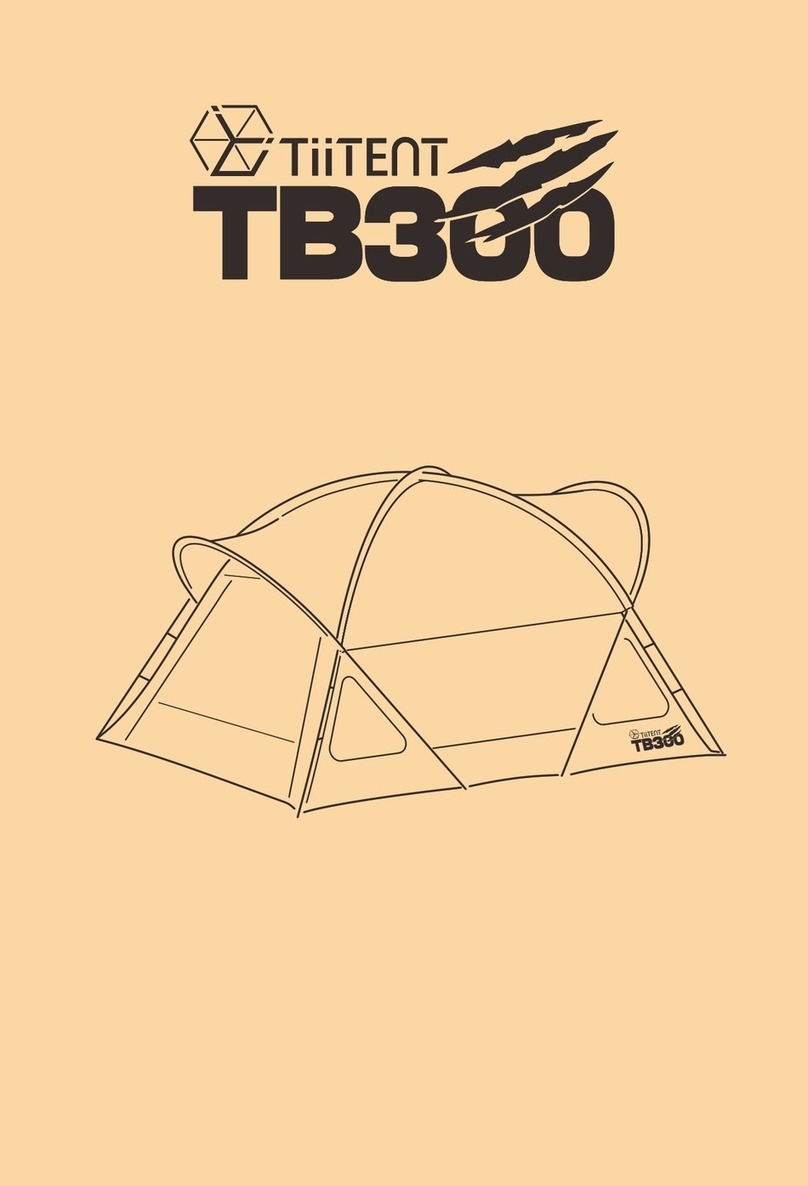
3
Parts & Service: 020 8988 7400 / E-mail: Parts@clarkeinternational.com or Service@clarkeinternational.com
POSITIONING AND INSTALLATION OF THE SHED
POSITIONING THE SHED
This shed is a temporary structure and is not recommended as a permanent
building. It is designed to offer protection from sun, rain, light snow, tree sap
and bird droppings etc. It is not designed to shelter equipment from
excessively high winds or heavy snow.
Choose your shed location carefully. Check for overhead power lines, tree
branches, etc. DO NOT install near roofs or other structures that may shed snow,
ice or excessive run-off onto your garage.
SITING THE GARAGE
Erect your shed on level ground over a firm, level area. Allow enough space
near each corner for the ground anchors and tie-down straps supplied to be
used as intended. If the ground area is of tarmac or concrete, the use of
ground anchor holding-down bolts will be required to anchor the shed to the
floor.
Choose a dry location where dampness arising from ground water in the
environment will not undermine the protection offer by the shed.
A masonry floor such as block paving or concrete is ideal, but if this is not
being supplied, a timber or shuttering plywood floor, protected by a suitable
groundsheet should be used. This will help to create a dry storage environment
by insulating the storage space from ground moisture.
Proper anchoring and keeping the cover tight and free of snow and debris is
the responsibility of the user. Damage caused by improper anchoring is not
covered under warranty.
CARE OF THE GARAGE STRUCTURE
This shed is NOT designed to support heavy snow. Snow or ice accumulation
may cause your shed to collapse. To avoid overloading, brush snow and ice
off the roof top with a broom or mop to prevent collapse with the resultant
damage to property or personal injury.
NEVER clear the roof of snow or debris from inside the shed.
DO NOT use hard-edged tools or instruments, such as rakes or shovels to
remove snow. These can cause punctures to the cover.
DO NOT use bleach, alkaline or harsh detergents for cleaning. Doing so will
damage the material. Soap and warm water are recommended.
In order to reduce risk of burning and avoid damage, DO NOT- cook, smoke,
refuel or use any open flame devices in or around the garage.
